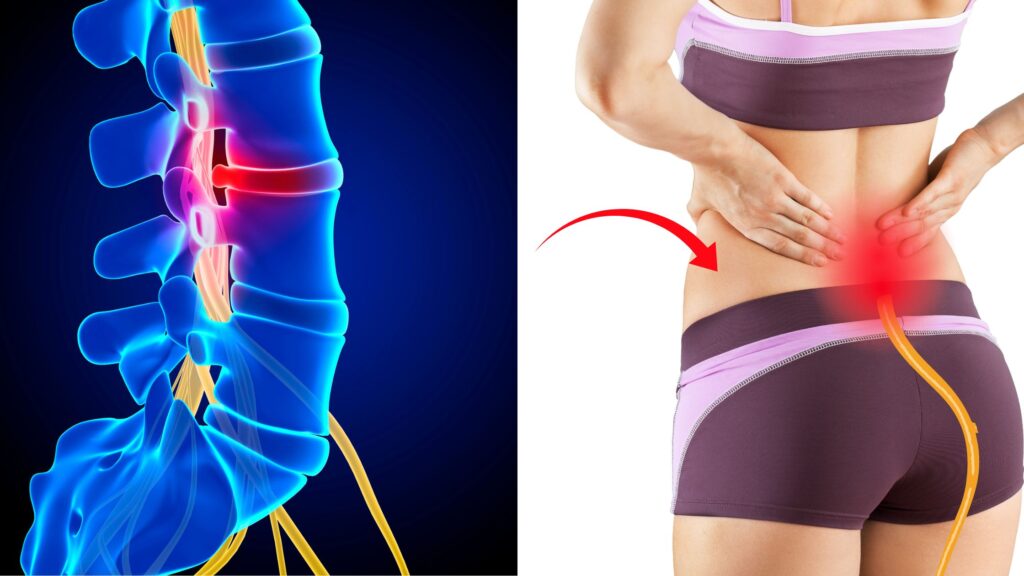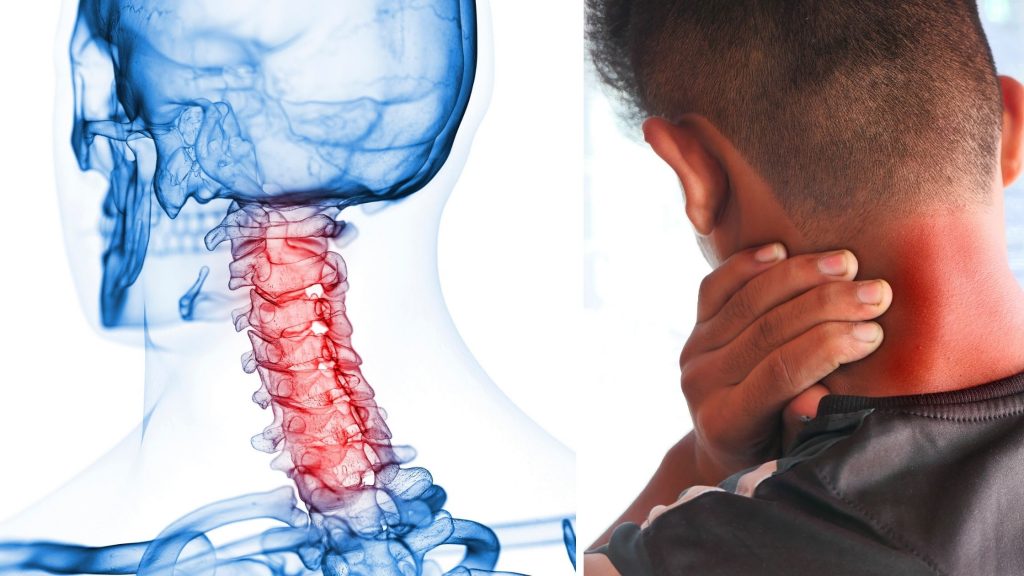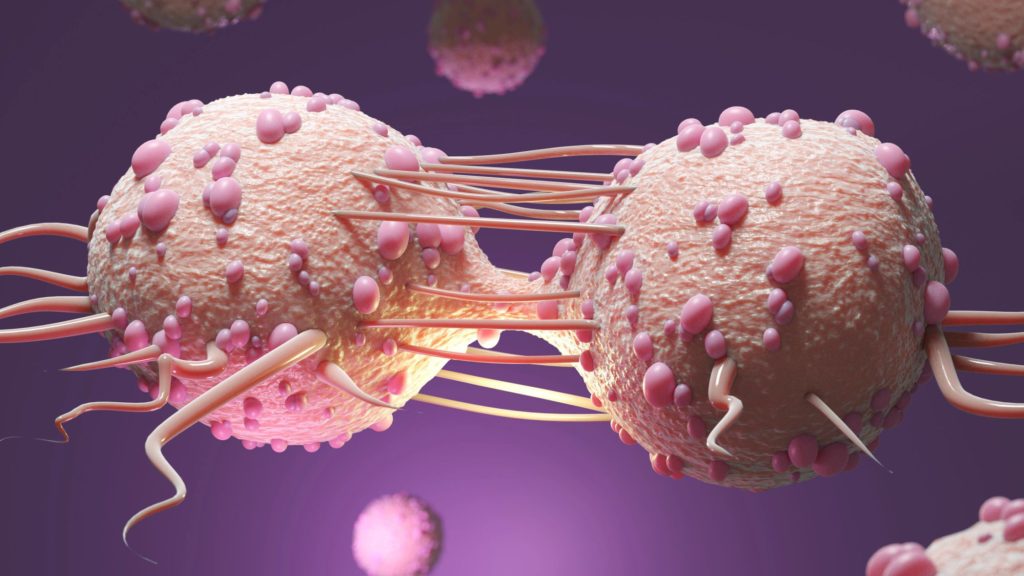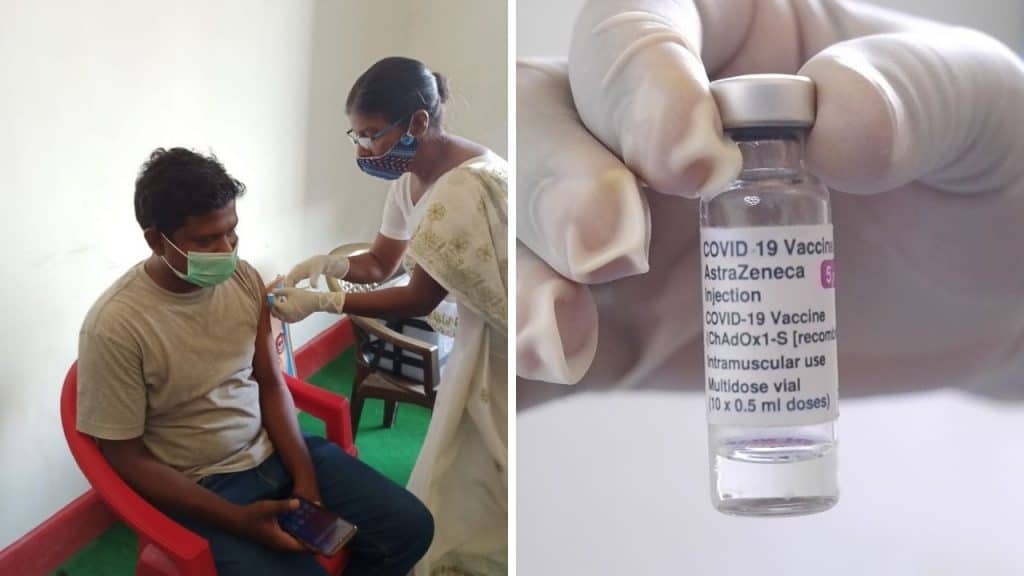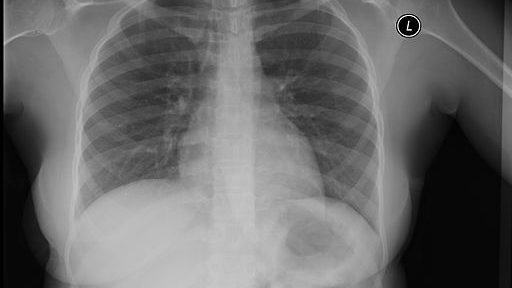Last updated on June 25th, 2025 at 10:12 am
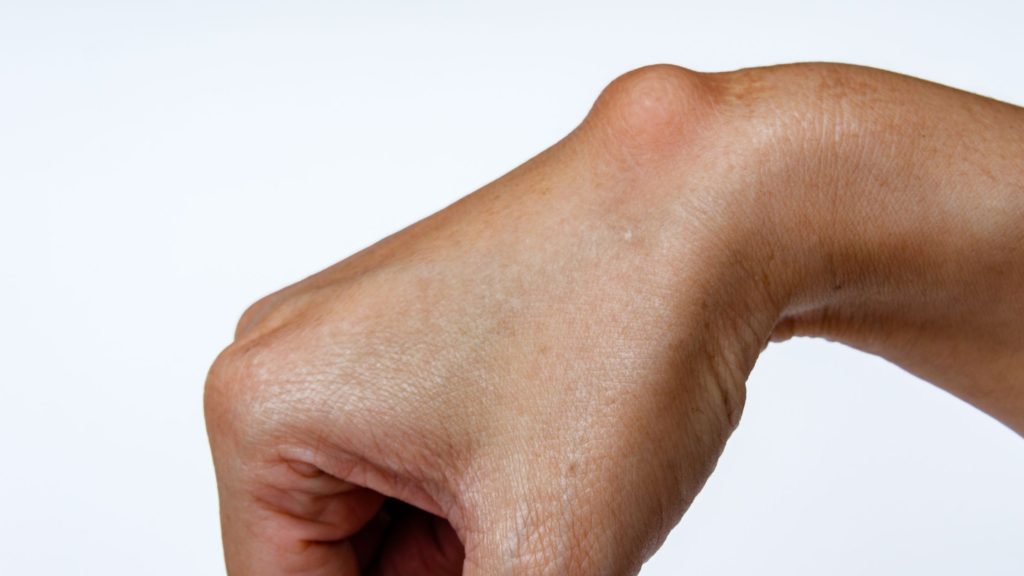
- Ganglion cysts are non-cancerous and often painless.
- 3 simple exercises can reduce swelling: massage, flexion-extension, and radial-ulnar deviation.
- Surgery is rarely needed—try natural methods first.
If you notice a small lump-like swelling on the dorsal aspect of the wrist, chances are it is a ganglion cyst. Most wrist ganglion cyst cases are not painful, and the person is usually concerned about their cosmetic appearance.
Some sufferers complain of wrist pain, which may also be due to wrist movement, and pain may even radiate to the arm. However, wrist pain can also be due to carpal tunnel syndrome.
Whatever it may be in the early stage, it can easily be managed by following simple ganglion cyst wrist exercises.
In this article, we will learn easy exercises for ganglion cysts in the wrist. We will also cover the signs and symptoms of wrist ganglion cysts. So, let us get started.
What Is a Ganglion Cyst Wrist? Causes & Risk Factors
Ganglia are actually benign soft tissue tumours, most commonly seen in the wrist joint. Although they can also be found in other joints, 60% to 70% of wrist ganglia are found on the dorsal aspect of the wrist1.
These cysts are connected to the underlying joint through a pedicle and filled with fluid, mainly hyaluronic acid.
But what causes it?
Although the exact cause of fluid filling this cyst is unknown, two proposed mechanisms exist.
- The first mechanism proposes that it may originate from within the joint, pumped into the cyst by the wrist’s motion through the pedicle.
- The second mechanism suggests that fluid from an extra-articular degenerative process may form cysts and then communicate with the joint.
- Any of the mechanisms could be the possible cause, or a combination of these mechanisms could contribute 1.
- It is believed that acute or chronic joint stress may cause ganglion cysts in the wrist.
Ganglion Cyst Symptoms: Signs You Shouldn’t Ignore
The symptoms of ganglion cysts include:
- A noticeable lump that is typically round or oval and filled with a jelly-like fluid. On palpation, it will feel like a soft rubber ball and is painful if you put overpressure on it.
- Most wrist ganglion cysts do not have symptoms besides swelling2. For others, pain in the wrist is the most common symptom and is more annoying than debilitating.
- In more advanced cases, pain may also radiate up the patient’s arm, decreasing range of motion and grip strength.
- While ganglion cysts are generally harmless and often don’t require treatment, they can cause pain or limit movement, in which case, medical attention may be necessary.
3 Best Ganglion Cyst Wrist Exercises (No Surgery Needed)
Most cases are asymptomatic; reassurance and observation are the treatment of choice for them. This is because, in 58% of cases, the swelling reduces spontaneously without intervention2.
The exercises we will learn can also be followed safely for recovery from ganglion cyst wrist surgery, except for the self-massage technique.
1. Ganglion Cyst Massage Technique (Step-by-Step Guide)
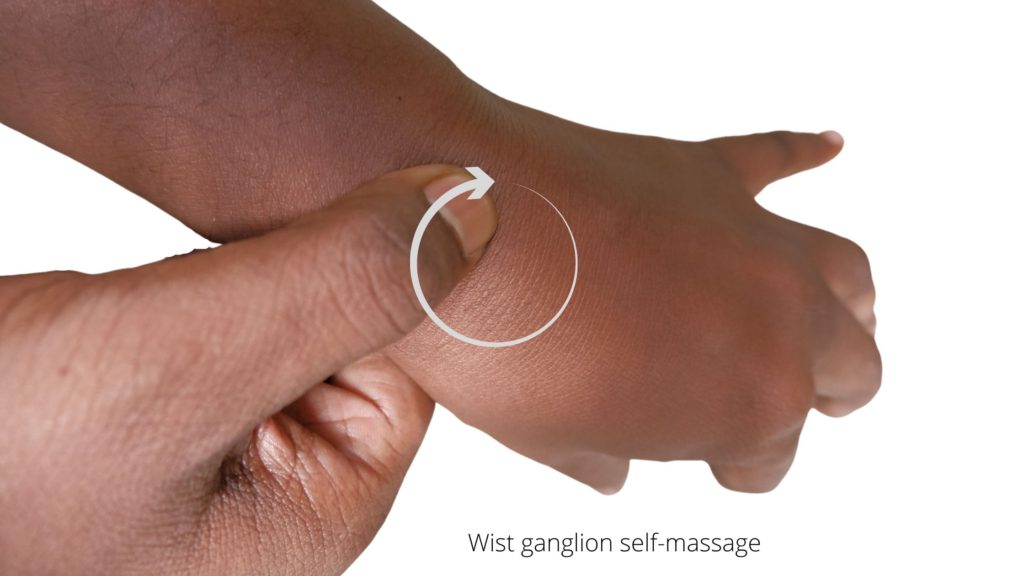
The first exercise on the list of ganglion cyst wrist exercises is a self-massage technique. In most cases, only applying this self-massage technique is enough to resolve the nodule.
To perform this self-massage technique, you need to use your thumb.
- Start by placing your thumb over the lump and applying light pressure.
- Gradually increase the pressure and then rotate your thumb in a circular motion, as demonstrated in the figure.
- As you rotate your thumb, continue to apply pressure to the lump.
- It’s recommended that you perform this self-massage every morning or whenever you have free time, whether you’re at work or at home.
2. Wrist Flexion & Extension Exercises for Ganglion Cysts
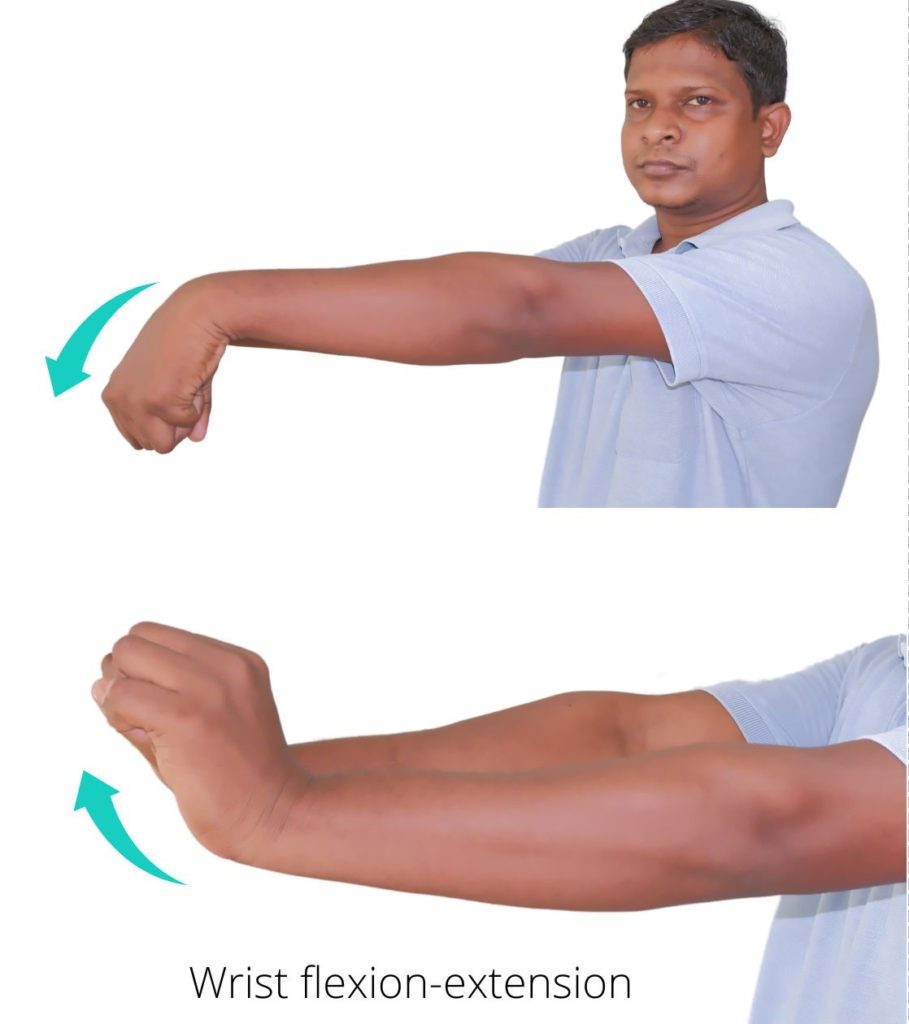
This straightforward but powerful exercise strengthens the wrist. It can be done while sitting or standing.
- First, sit or stand up straight and extend your arm at shoulder level, with your palm facing down.
- Then, slowly and smoothly bend your wrist up and down.
- Repeat this motion of bending and straightening your wrist at least 15 to 20 times in one session.
3. Radial & Ulnar Deviation: Gentle Motion to Shrink Cysts

The next set of exercises for a ganglion cyst in the wrist involves radial and ulnar deviation. Radial deviation refers to bending the wrist towards the thumb, while ulnar deviation involves bending the wrist towards the little finger.
- Start by positioning your hand with the palm facing inwards, similar to the previous exercise.
- From this position, slowly and smoothly move your wrist into radial and ulnar deviation, trying to reach the full range of motion.
- Aim to perform this motion 15 to 20 times in a session.
Upgrade Your Routine: Once pain subsides, strengthen your wrist further with TheraBand resistance bands (start with extra-light resistance).
When Is Surgery Needed for Ganglion Cysts? (Other Options First)
In some cases, surgery is necessary to remove the cyst. However, other less invasive procedures may also be used to treat ganglion cysts. Aspiration, steroid injection, sclerotherapy, and hyaluronidase were generally ineffective.
Aspiration is the simplest method in which the syringe is used to remove fluid from the nodule. However, it has a high recurrence rate. Many clinicians prefer brace immobilisation after aspiration2.
Finally, the surgical removal of a ganglion cyst with its pedicle is considered the most effective treatment.
Recommended Product: For added support during recovery, try the ComfyBrace Wrist Brace. Its adjustable strap helps stabilise the joint while allowing gentle movement for exercises.
- INSTANT WRIST RELIEF! CARPEL TUNNEL SYNDROM: BE… GONE! Have you HAD IT with waking up to your WRIST THROBBING IN AGONY…
- ADJUSTABLE, CUSTOMIZABLE, ONE BRACE FITS MALE, FEMALE, BOTH RIGHT & LEFT HAND! Toss that too-loose, yet stuffy wrist bra…
- IMMEDIATE WRIST-PAIN RELEIF USING SPLINT SUPPORT AND GENTLE COMPRESSION Relieve the pain of Carpel Tunnel Syndrome, Arth…

Keep Reading: Wrist rest for mouse pad| Will this VRIST give you wrist pain relief
Ganglion Cyst Wrist: FAQs & Expert Answers
The author is a physiotherapist who has been practising for the last 17 years. He holds a Bachelor's in Physiotherapy (BPT) from SVNIRTAR (Swami Vivekananda National Institute of Rehabilitation and Research), one of the prestigious physiotherapy schools in India.
Whatever he learns dealing with his patient, he shares it with the world through blogs and e-books. He also owns a YouTube channel, "Sunit Physiotherapist" with over 8 lakh active subscribers. Here, he shares everything he gets to learn serving the patient.

